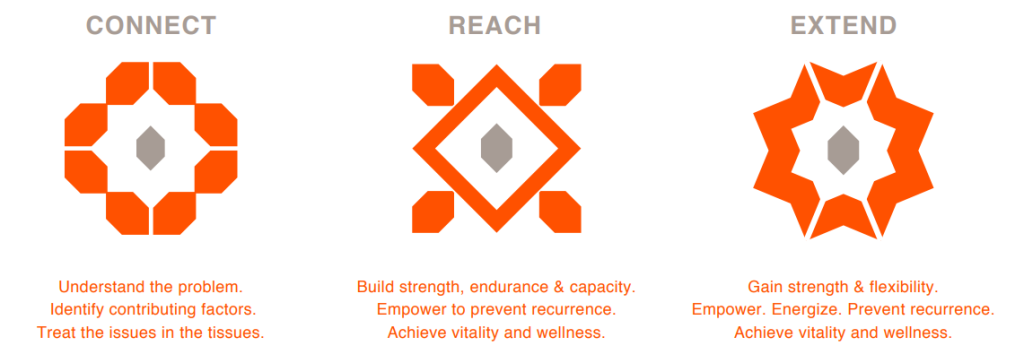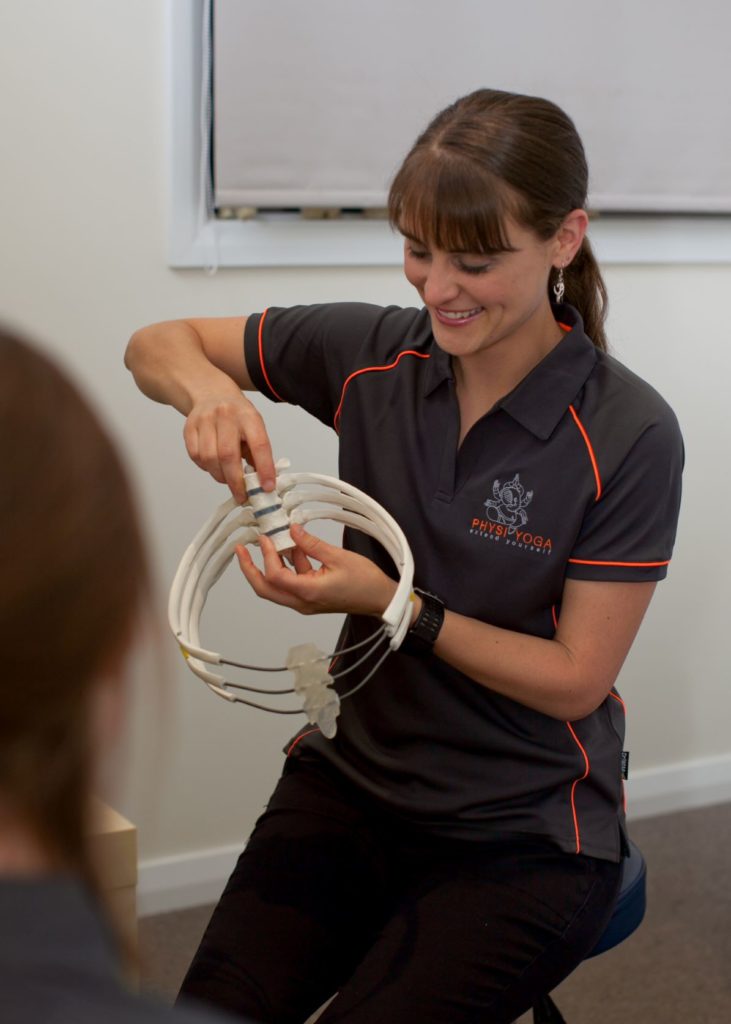The PhysiYoga Approach
Our approach to physiotherapy aims to alleviate your current symptoms and understand the root cause of your problem. We aim for long lasting results. We invest many hours in professional development in order to meet these aims. We have developed a PhysiYoga method of assessing your posture and movement, as part of a comprehensive three step approach to rehabilitation:

Connect
Reach
Here we start addressing the route causes of the problem, and the consequences such as compensation patterns you may have developed along the way. We aim to get you back to where you were before.
Extend
In the Extend phase, the goal is to get you better than you were before. We have a range of performance enhancement and exercise options to help you get fitter, stronger, more flexible than before.
Evolution of the PhysiYoga Approach

The whole body approach to physiotherapy we use has evolved over a decade, encorporating the skills and experience of the entire team.
The basis for our approach stems from the Integrated Systems Model (ISM), ConnectTherapy and the Thoracic Ring Approach (details below).
Emily Eglitis (clinic Founder) started using these models and mentoring the PhysiYoga team in them, commencing with the ISM in 2012. In 2015 (after three intensive training visits to Canada) Emily became the first Certified ConnectTherapy Practitioner in Australia and continued to work closely under the mentorship of Dr Linda-Joy Lee, and as a teaching assistant on her Australian courses until 2019.
Stepping aside from ConnectTherapy in 2020, Emily has evolved her approach to specifically suit the needs of her team and clients in the rural, Australian setting. The PhysiYoga Team continue to inform and help evolve the PhysiYoga Approach.
History of ConnectTherapy and the Thoracic Ring Approach
The physiotherapy approach of ConnectTherapy was developed by Canadian researcher and clinician Dr Linda-Joy Lee, as an evolution of the Integrated Systems Model she co-developed with Diane Lee.
LJ’s pioneering work in understanding the thorax (the thoracic spine and “rib-cage region” of the spine) saw her also develop The Thoracic Ring ApproachTM. The Thoracic Ring Approach is an integral part of ConnectTherapy as it helps us to more deeply understand the integrated function of the entire spinal column and pelvis.
ConnectTherapy recognises that pain or no pain, dysfunction in one area of the body, can still drive ongoing trouble in other regions of the body. Because a healthy and happy system has choice and the ability to move in a variety of ways. Dysfunctions start to limit our ability to move and we start to feel stiff, old and weak.
ConnectTherapy is an approach to physiotherapy, where the whole person is assessed to determine how the current problem (wherever it is in the body) is actually reflecting deeper, underlying and usually more long standing issues.
The Thoracic Ring Approach is part of Connect Therapy to specifically assess the thorax. When the thorax becomes dysfunctional (through habits, poor posture, repetitive actions, compensation from problems in other areas like the foot), it may or may not become painful itself, but it can still drive other uncomfortable symptoms like headaches, incontinence, autonomic dysautonomia.

